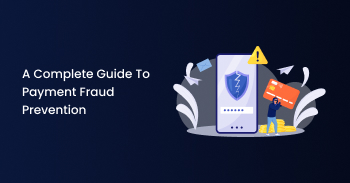Introduction:
In today’s digital era, where technology has revolutionized banking transactions, fraud has become an ever-present threat for financial institutions. Banks, being prime targets for fraudsters due to their vast monetary assets, must adopt robust risk management strategies to protect their customers’ assets and maintain their reputation.
This blog post aims to shed light on the significance of fraud prevention and risk management in the banking industry. By understanding the various types of fraud, the potential consequences, and effective mitigation measures, banks can safeguard their operations and preserve customer trust.
Types of Fraud in Banking:
Fraud in the banking sector can occur through various avenues, including identity theft, account takeover, data breaches, credit card fraud, and money laundering. These sophisticated methods can lead to immense financial losses, reputation damage, regulatory penalties, and erosion of customer confidence.
Risk Management Strategy for Banks:
To combat these hostile threats, banks must establish a robust risk management strategy centered around the following key components:
1. Prevention through Detection and Surveillance:
Banks should employ advanced technologies like artificial intelligence and machine learning algorithms to detect unusual and suspicious activities. By monitoring customer transactions in real-time, banks can identify and flag potential instances of fraud, enabling prompt action to mitigate risks.
2. Customer Education and Awareness Programs:
Banks must proactively educate their customers about common fraud schemes and preventive measures. Regular awareness campaigns, online security tips, and financial literacy programs can empower customers to recognize and defend themselves against sophisticated scams.
3. Enhanced Security Measures:
Implementing multi-factor authentication techniques, encryption protocols, and secure firewalls is crucial in fortifying a bank’s digital infrastructure. Regular cybersecurity audits should be conducted to identify vulnerabilities and take appropriate measures to patch them.
4. Collaboration with Law Enforcement:
Banks need to forge strong partnerships with law enforcement agencies and regulatory bodies to facilitate information sharing, expedite investigations, and ensure fraudsters are held accountable. This collaboration aids in developing comprehensive guidelines and policies to counter emerging threats.
5. Staff Training and Continuous Education:
Bank employees should undergo regular training on fraud detection, anti-money laundering protocols, and data privacy regulations. Ensuring that staff is well-versed in the latest fraud detection techniques and potential red flags strengthens the institution’s defense against internal and external threats.
6. Develop a Culture of Trust and Transparency:
Maintaining a customer-centric approach, banks must foster an environment of trust and transparency. By openly communicating their risk management efforts and highlighting customer feedback channels, banks demonstrate their commitment to preserving their customers’ financial well-being.
Conclusion:
Fraud remains an inevitable challenge for banks, with its constantly evolving nature and sophisticated methods. However, by implementing a risk management strategy encompassing preventive measures, robust technological solutions, staff education, and customer awareness, banks can significantly curb the detrimental impact of fraud on their operations and reputation. Ultimately, by prioritizing fraud prevention and diligently managing risks, banks can foster a secure and trustworthy environment for financial transactions, ensuring the longevity of their institution while protecting their valued customers.
by Sudesh Prabhu





